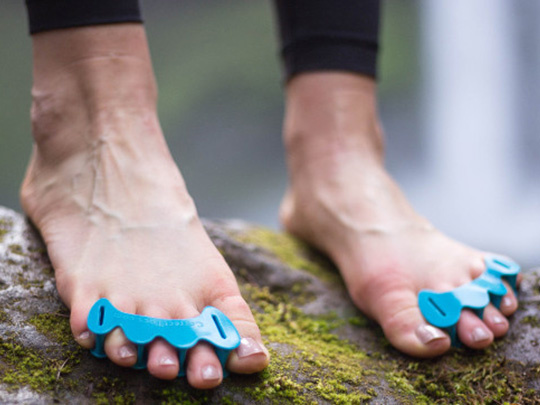HOW SHOULD WE USE FOOT ORTHOTICS?
As Pedorthists, we are in a profession that is assigned the responsibility to assess for and treat clients with orthotics when necessary.
Orthotics have been a treatment approach for lower extremity issues since the 1950’s. From the late 80’s to present, orthotics have grown in popularity to the point where they are now readily available to many due to being an insurable treatment option.
Finding out if orthotics are a good option, why, and for how long they should be used for are the reasons many clients come to SoleFit and other pedorthic clinics. However, not all clinics or practitioners share the same strategies and viewpoints when treating clients, thus there are many different arguments for and against orthotics.
SYMPTOMS AND SOLUTIONS
As a clinic, we have always felt our primary responsibility to a client is to help them understand why they may be experiencing a problem. What are the causes? What is at the root of the problem? To do so equips the client with a better understanding of how to go about addressing the cause.
Pain or discomfort is generally the most prominent symptom we hear. However, we don’t simply treat the symptom—we address the cause.
Think of it this way: If you get chronic headaches or suffer from poor sleep, your instinct might be to take Advil or a sleep aid. However, this would only address the problem in the moment. It would not bring you closer to understanding how to prevent that headache or insomnia. The same thing happens when we look at pain and injury in other areas of the body: We can get stuck on the symptom.
We don’t simply treat the symptom—we address the cause.
The same thing happens when we look at pain and injury in other areas of the body: we can get stuck on the symptom. When someone has back pain, we could immobilize the back by wearing a brace and quickly reduce the pain. But, if we took off the brace without addressing what caused the pain, we often would be back to square one.
Therefore, as pedorthists, we feel our principle responsibility is to identify the cause behind a problem. Understanding the cause is where we can attempt to reverse engineer the problem and determine the solution.
Invariably, if orthotics are a part of this solution, it is likely to address a ‘shortcoming’ in the foot’s function. Several underlying reasons might be at play, such as damage from injury, poor footwear choices, muscular weakness, tissue restriction, or atrophy.
Our exceptionally-designed feet balance our body’s posture and position, so they deserve detailed analyses. This is often the first place we try to support when problems arise. Thus, our footwear can become integral to ‘brace’ the foot in effort to change movement patterns.
In addition, ideally we should always consider improving foot support and structure naturally. This would include improving toe alignment, arch tissue strength, and ankle, knee and/or hip stability and mobility.
We talk at length in our assessments about how potent a change it is to improve joint mechanics via mobility work and stretching, or the long term benefits of building strength or stability where it’s lacking. Improving foot strength alone is a significantly influential option to improve many conditions requiring pedorthic care.
Below we have put together a list of 10 healthy exercises to help create stronger and more natural feet.
10 STEPS TO HEALTHIER FEET

Toe spacers like Correct Toes and Wild Toes, can go a long way to improving the alignment of your toes. Even toe separator socks like Injinji can help to make a difference.
AN OUNCE OF PREVENTION, A POUND OF A CURE
Sometimes the easiest solution is the most attractive one, and often it is the best first step. Orthotics, bracing and taping can help achieve that quick fix. However, we don’t want to ignore the deficiencies that caused the problem in the first place. Regularly making time for the above suggestions can help in the long term to create a fix that will stand the test of time.


